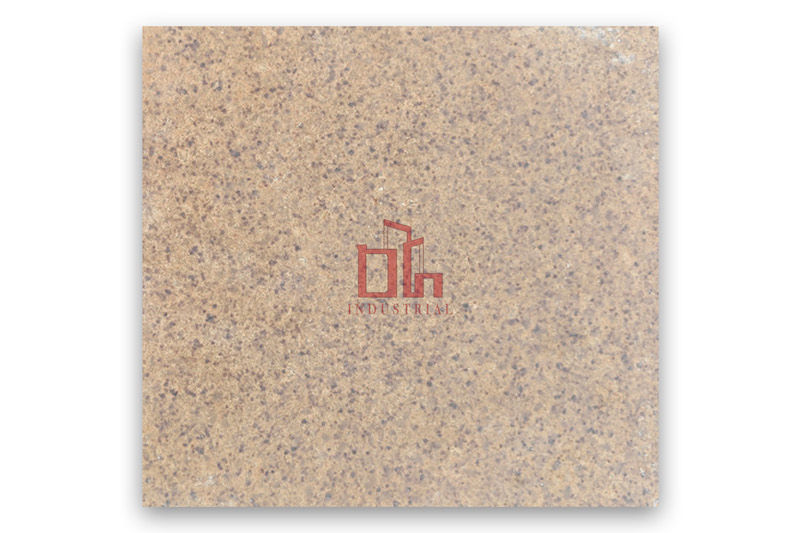What is the difference between Magnesia Bricks and High Alumina Bricks?
Mar 06, 2024Magnesia bricks and high alumina bricks are two refractory products with different materials and properties. They can also be used in high-temperature kilns. However, many customers have difficulties when choosing and cannot distinguish the characteristics and uses of the two bricks. .
Magnesia bricks are MgO products and alkaline refractory bricks. Why do you say this? This is because magnesium oxide is an alkaline oxide, has the properties of an alkaline oxide, and is a cementitious material. It is white or off-white powder, odorless, tasteless and non-toxic. It is a typical alkaline earth metal oxide with the chemical formula MgO. The melting point is 2852°C, the boiling point is 3600°C, and the density is 3.58g/cm3 (25°C).
The raw materials for the production of magnesia bricks mainly rely on magnesite. The production process of magnesia bricks is to mix dead-burned magnesia (particles ranging from 5 mm to fine powder) with an appropriate amount of sulfurous pulp waste liquid or caustic magnesia as a binder. Shaped under a press. The composition of magnesia bricks is: metallurgical magnesia, sulfite pulp waste liquid, and caustic magnesia. Metallurgical magnesia is MgO decomposed from magnesite at temperatures above 1600°C. Its composition is: MgO: 92-93.5%, Fe2O3: 1.5-3%, AL2O3: 0.5-3%, CaO: 1-2.5%, SiO2 :2-2.5%.
 Disadvantages of magnesia bricks: The refractoriness of magnesia bricks can reach more than 2000°C, and their load softening temperature varies greatly with the melting point of the cementing phase and the amount of liquid phase produced at high temperatures. Generally, the load softening starting temperature of magnesia bricks is between 1520 and 1600°C, while high-purity magnesia bricks can reach 1800°C. The load softening starting temperature of magnesia bricks is not much different from the collapse temperature. The linear expansion rate of magnesia bricks at 20~1000℃ is generally 1.2%~1.4%, and is approximately linear.
Disadvantages of magnesia bricks: The refractoriness of magnesia bricks can reach more than 2000°C, and their load softening temperature varies greatly with the melting point of the cementing phase and the amount of liquid phase produced at high temperatures. Generally, the load softening starting temperature of magnesia bricks is between 1520 and 1600°C, while high-purity magnesia bricks can reach 1800°C. The load softening starting temperature of magnesia bricks is not much different from the collapse temperature. The linear expansion rate of magnesia bricks at 20~1000℃ is generally 1.2%~1.4%, and is approximately linear.
When a liquid phase appears in the brick at high temperatures, sudden shrinkage occurs. The thermal conductivity of magnesia bricks is high, second only to carbon bricks and silicon carbide bricks among refractory products, and it decreases as the temperature increases. The thermal shock resistance of magnesia bricks is poor. Improving the purity of magnesia bricks can appropriately improve the thermal shock resistance. Magnesia bricks have very poor resistance to acidic slag. They cannot be in direct contact with silica bricks when used. Neutral bricks are generally used to separate them. The conductivity of magnesia bricks at normal temperature is very low, but it cannot be ignored at high temperatures (such as 1500°C). If it is used at the bottom of an electric furnace, attention should be paid. Magnesia bricks have poor hydration resistance and are easily hydrated when exposed to water, causing cracks and reducing their strength. Therefore, pay attention to moisture, rain and snow during storage and transportation.
High alumina bricks are AL2O3-SiO2 products, which are what we often call aluminum-silicon products. In other words, they can also be called neutral refractory bricks. From my perspective, the main oxides of high alumina bricks are AL2O3 and SiO2. phase, while AL2O3 belongs to the R2O3 trivalent oxide, and SiO2 belongs to the RO2 tetravalent oxide. The combination of the two is to produce a liquid phase sintering reaction at high temperature to form mullite 3AL2O3·2SiO2. The melting point is 1870°C, which has high-temperature use conditions. The main raw material of aluminum bricks is kaolinite AL2O·2SiO2·2H2O. The melting point is 1750~1787℃ and the density is 2.58~2.67g/cm3. Therefore, when the raw material has high temperature sintering liquid phase reaction, on the one hand, it can form mullite faster. With high melting point, the load softening temperature of high alumina bricks has a great relationship with the original taste.
The load softening temperature of low-grade high-alumina bricks is 1450°C. Why are high alumina bricks a neutral product? Because AL2O3 is a typical amphoteric oxide, it becomes alkaline when encountering strong acids and becomes acidic when encountering strong bases. It can interact with both acids and alkalis. Both produce salt and water. Therefore, high alumina bricks are neutral refractory products, but one thing is that AL2O3 must exceed 70%.
Magnesia bricks and high alumina bricks are two commonly used products in our kiln construction and repair. Before choosing to use, you must analyze and confirm the material and usage properties of the bricks to avoid losses caused by wrong selection.